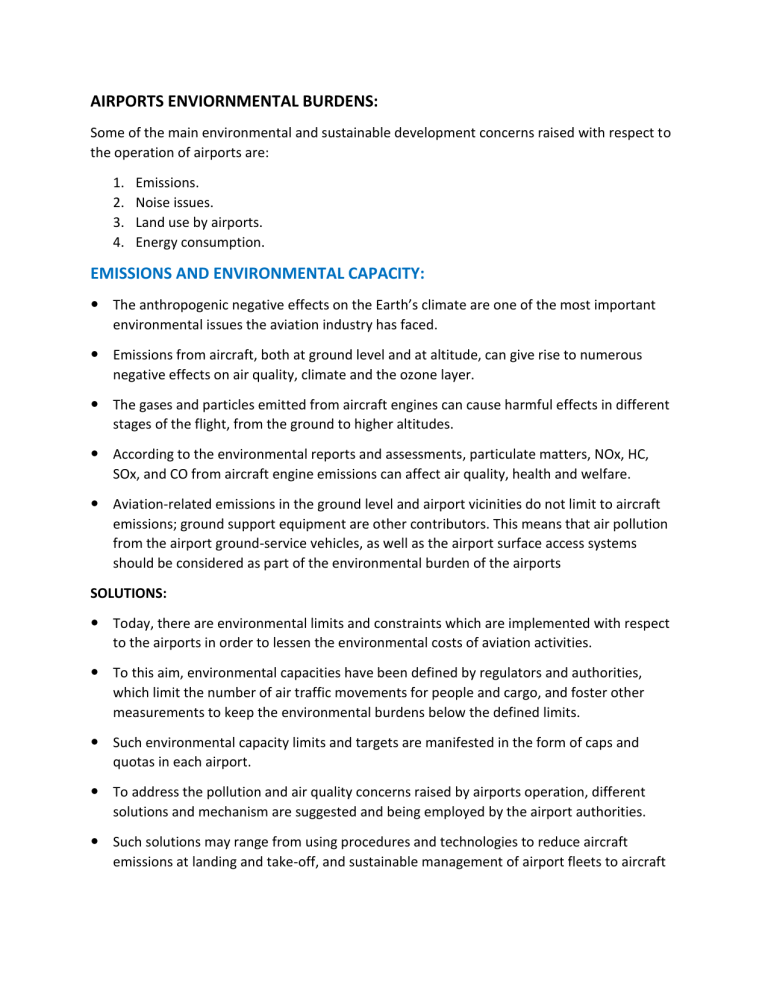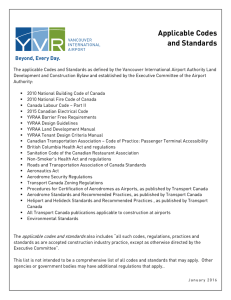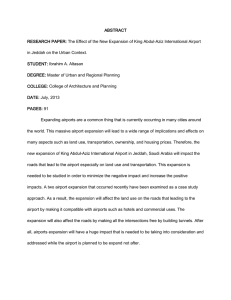
AIRPORTS ENVIORNMENTAL BURDENS: Some of the main environmental and sustainable development concerns raised with respect to the operation of airports are: 1. 2. 3. 4. Emissions. Noise issues. Land use by airports. Energy consumption. EMISSIONS AND ENVIRONMENTAL CAPACITY: The anthropogenic negative effects on the Earth’s climate are one of the most important environmental issues the aviation industry has faced. Emissions from aircraft, both at ground level and at altitude, can give rise to numerous negative effects on air quality, climate and the ozone layer. The gases and particles emitted from aircraft engines can cause harmful effects in different stages of the flight, from the ground to higher altitudes. According to the environmental reports and assessments, particulate matters, NOx, HC, SOx, and CO from aircraft engine emissions can affect air quality, health and welfare. Aviation-related emissions in the ground level and airport vicinities do not limit to aircraft emissions; ground support equipment are other contributors. This means that air pollution from the airport ground-service vehicles, as well as the airport surface access systems should be considered as part of the environmental burden of the airports SOLUTIONS: Today, there are environmental limits and constraints which are implemented with respect to the airports in order to lessen the environmental costs of aviation activities. To this aim, environmental capacities have been defined by regulators and authorities, which limit the number of air traffic movements for people and cargo, and foster other measurements to keep the environmental burdens below the defined limits. Such environmental capacity limits and targets are manifested in the form of caps and quotas in each airport. To address the pollution and air quality concerns raised by airports operation, different solutions and mechanism are suggested and being employed by the airport authorities. Such solutions may range from using procedures and technologies to reduce aircraft emissions at landing and take-off, and sustainable management of airport fleets to aircraft engine efficiency, as well as the use of alternative fuel sources for ground support equipment and power heating. With respect to the emissions from airport operations, it is important to mention that the strategies for minimizing emissions from sources owned or controlled by airport operator and emissions from off-site generation of electricity purchased for airports are different from those developed to prevent acceleration of environmental impacts created by emissions from sources which are not owned or controlled by the airport operator, including aircrafts and ground access vehicles and public transport. NOISE ISSUES: Noise, which can be defined as any unwanted sound, can cause profound negative effects on humans’ health and their physical, psychological and social wellbeing and quality of life. Since the emergence of the aviation industry, aircraft noise has been one of the most important sources of excessive noise generated by human activities. Two sources of aircraft noise are the engines, which include two major types of jet and piston engines, and the aircraft frame. In the view of the fact that aircraft produces more noise during take-off and landing, airports are considered to be important contributors to the problem of excessive noise, and from a community’s perspective, one of the most obvious environmental problems of airport activities is noise pollution. In addition, noise generated by ground access systems in the airport landside area adds to the already existing problem of excessive noise in airports. SOLUTIONS: With respect to the problem of excessive noise in the vicinity of airports, airport operator need to reduce aircraft noise emissions, reduce the number of people exposed to excessive noise levels, and finally help local community receive the airport’s plans and activities. Solutions such as urban planning, applying new technologies and designs, and restricting operation of particular aircraft types, frequency of flights and night-time flights, planning and managing land use, and redistributing noise by managing runways and routes use are some of the mitigative measures employed to meet noise quotas and prescribed limits. For the purpose of protecting local communities in the vicinity of airports, curfews and avoidance of emission of noise during night might seem to be some of the most practical solutions. However, restrictions on night flights and curfews lead to under-utilization of infrastructure, which is not favorable with respect to growth and economic viability of airports. ICAO, with its regulations and manuals, has been very active in noise management and control at airports. LAND UTILIZATION, WASTE AND CONGESTION The impacts of airports do not limit to emissions and noise issues. Land use by airport, waste and ground congestion are among the problems which need attention of regulators as well as airport authorities in order to diminish the impacts on environment and social life. Land take refers to utilization of land by airports for the purpose of building and operating airport related activities. Through effective operational procedures and increasing the capacity gains the need for additional land for building new runways and facilities will be avoided. Airport waste refers to the waste generated by an airport’s operation. Such waste can be generated by passengers, airfield operations and maintenance activities, and those caused by construction and demolition. The less the waste generated by airport over a specific time is, the better and more efficient waste management efforts of airports have been. Needless to mention that some of the activities of airports such as aircraft and airfield deicing and anti-icing, fuel storage and refueling, aircraft and vehicle cleaning and maintenance, and construction may result in the discharge of pollutants to adjacent water bodies and consequently trigger aquatic life and human health. Airline and air passenger congestion and delays are another issue accompanied with operation of airports. Optimum utilization of airport and specially runways’’ capacity is normally considered the key to minimize the aforementioned congestion.

